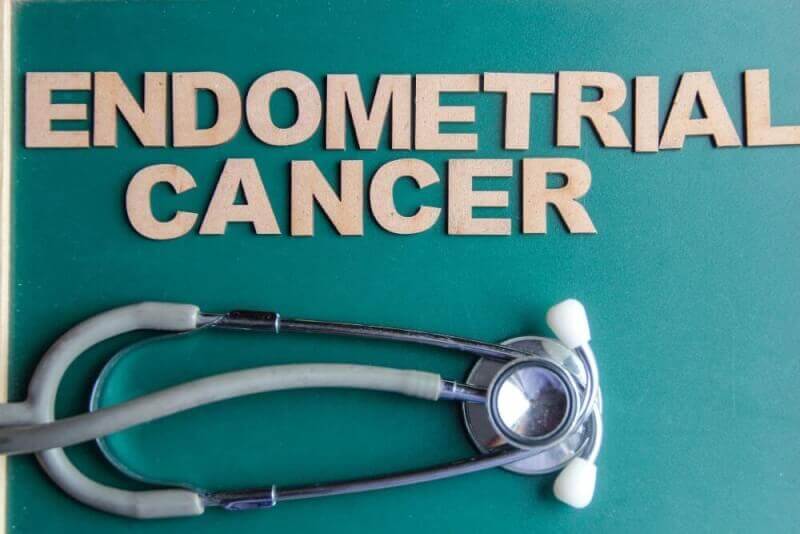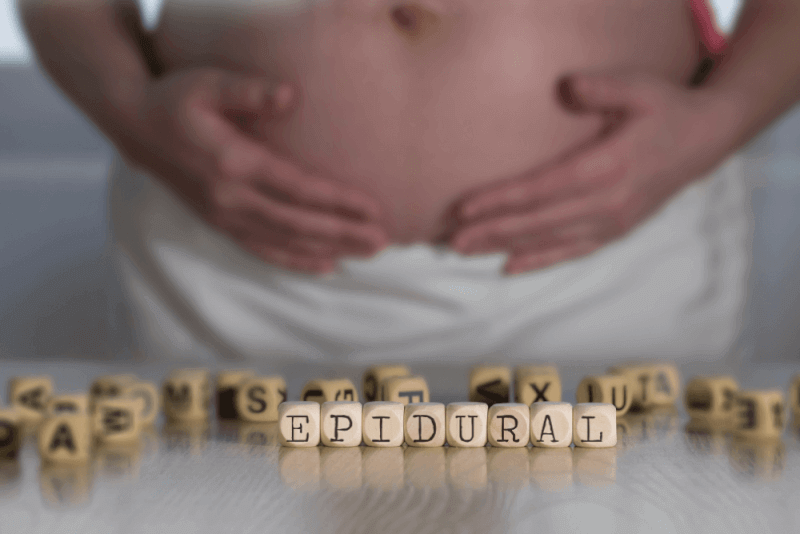What is endometrial cancer?
Endometrial cancer, one of the gynecologic cancers, is a very different type of cancer from uterine sarcoma, which occurs in the uterine muscle, although it is called uterine cancer. Endometrial cancer is a type of cancer that starts in the lining cells in the lining of the uterus, which are shed during each menstrual period. They are much more common than other types of cancer in the uterus. It is the 4th most common cancer among all other types of cancer in women. is a type of cancer.
Endometrial cancer, which is usually seen in women over the age of 60, has a 5% chance of being seen before the age of 40. A woman has a 2% risk of developing endometrial cancer in her lifetime. Endometrial cancer is also called endometrial cancer.
Endometrial cancer stages
After the diagnosis of endometrial cancer, its stage needs to be determined in order to plan treatment. This requires some imaging and blood tests. 67% of endometrial cancer cases are diagnosed at an early stage. In addition, since staging tests and imaging methods can be misleading, pathologic examination of tissues obtained from surgery is accepted as the basis for staging.
Phase 1
In the first stage of endometrial cancer, the tumor appears in the lining of the uterus and less than half of the muscle tissue. Endocervical gland involvement may also be seen at this stage. However, cervical stroma involvement is not seen in the first stage.
The first stage of endometrial cancer is divided into two phases. In stage A, cancerous cells can only be seen in the lining of the uterus. In some cases, cancerous cells can also be seen in the muscle layer. In stage B, half and half or more myometrial invasion is seen.
Phase 2
In the second stage of endometrial cancer, cancerous cells reach the connective tissue in the cervix. Therefore, endocervical stoma involvement occurs in the second stage.
Phase 3
In the first stage of the third stage, which is divided into three phases, cancer cells involve the serosa of the uterus and/or the adnexa. In stage B of the third stage, the tumor has spread to the vagina. This spread can be either direct spread or metastasis. Cancerous cells are also found in the connective tissues around the uterus. In stage C, the final stage of the third stage, the tumor begins to appear in the regional lymph nodes. In C1 stage, pelvic lymph nodes are involved and in C2 stage, paraaortic lymph nodes are involved.
Phase 4
In the first stage of the fourth stage, which is the last stage of endometrial cancer, the bladder and intestinal mucosa are involved. Stage B involves metastasis to distant organs and regions. These organs include bone, lung, bile, pancreas, inguinal lymph gland and peritoneum.
Diagnostic criteria for endometrial cancer
The characteristic symptom of endometrial cancer, which is one of the types of cancer that can be diagnosed at an early stage, is that it causes bleeding outside the menstrual period. Generally, patients who consult a doctor with this complaint are first asked for a detailed history and family history. This is followed by a physical examination. Physicians may order the following tests in the light of their findings.
Ultrasonography
Ultrasound imaging is usually part of the physical examination. This imaging system visualizes the inside of the vagina.
Endometrial biopsy
In endometrial biopsy, an important diagnostic test, tissue is removed from the uterus. This procedure is usually taken under office conditions.
Hysteroscopy
The process of examining the inside of the uterus with a camera is called hysteroscopy. The camera is inserted into the uterus through the vagina. A biopsy sample can also be taken during this examination.
CA-125
CA-125, which is a method that can be used both in the diagnosis of endometrial cancer and in monitoring the course of treatment, is one of the blood tests.
Endometrial cancer pathology
Endometrial cancer is basically divided into two types. In type 1 endometrial cancer, tumors spread more. The type of endometrial cancer seen especially in young, obese and peri-menopausal women is type 1. These estrogen-sensitive cells are low-grade malignant and mutations in PTEN, PIK3CA, KRAS and CTNNBI are observed.
Type 2 endometrial cancers are usually seen in older and postmenopausal women. Approximately one-third of cases have a p53 mutation. In addition, the incidence of endometrial cancer is approximately 10%.
The way endometrial cancer spreads is as follows:
- Endometrial cancer that starts in the uterine wall first reaches the muscles of the uterus.
- It can then move from the uterine cavity to the cervical canal.
- It can progress from the myometrium to the serosa and peritoneal cavity.
- It can travel along the fallopian tubes and reach the ligamentous and peritoneal surfaces.
- It can metastasize to distant tissues and organs through the bloodstream.
- It can reach distant lymph nodes via lymph vessels.
Symptoms of endometrial cancer
The most characteristic symptom of endometrial cancer is vaginal bleeding outside the menstrual period. The fact that it is seen especially in postmenopausal women also plays an important role in early diagnosis. Other symptoms of endometrial cancer include the following:
- Abnormal or bloody discharge from the vagina
- Pain during sexual intercourse
- Pelvic pain
- Uterine wall thickness above 11 mm in postmenopausal women during gynecological examination
- The uterine wall is over 4 mm in women who still have bleeding after menopause
Causes of endometrial cancer
Endometrial cancer is a disease caused by cells mutating and multiplying uncontrollably. Among the factors that can cause cells to mutate are the following.
Hormonal imbalance
Progesterone and estrogen hormones, which play an active role in balancing the menstrual cycle, are two hormones that balance each other. However, prolonged high levels of estrogen compared to progesterone increase the risk of endometrial cancer.
These hormonal imbalances are usually seen in obese, diabetic and polycystic ovary patients. In addition, the risk is increased in women who take estrogen hormone during menopause but do not use progesterone hormone.
Menstruation for a long time
Women who start menstruating before the age of 12 or go through menopause at an older age are exposed to hormonal influences for a long period of time, which increases the likelihood of endometrial cancer.
Not getting pregnant
Studies have found that the risk of endometrial cancer is increased in women who have never been pregnant in their lifetime.
Obesity
Obesity brings with it hormonal imbalances and inhibition of ovulation. For this reason, the risk of endometrial cancer is increased in obese women.
Advanced age
Endometrial cancer is usually diagnosed in women over 60 years of age and in postmenopause. Therefore, older age increases the risk of endometrial cancer.
Using tamoxifen for breast cancer
Tamoxifen, which is used in estrogen receptor positive breast cancer patients, causes thickening of the intrauterine wall. This increases the risk of endometrial cancer. Therefore, patients using tamoxifen should be closely monitored.
Hereditary colon cancer syndrome
The risk of endometrial cancer is also increased in people with hereditary non-polyposis colon cancer, one of the types of cancer with a genetic tendency, or in close relatives of this type of cancer.
Endometrial cancer treatment methods
There are many treatment modalities that can be used to treat endometrial cancer. These methods are often used in combination.
Surgery
The main treatment for endometrial cancer is surgery. In both open and closed surgery, it is possible to remove the uterus or to take a biopsy from the peritoneum.
Hysteroscopy and aslpingo oophorectomy operations are performed to remove the uterus, ovaries and fallopian tubes. These procedures make it impossible for the treated patient to become pregnant in the future. In addition, women who have not yet entered menopause also enter menopause after surgery.
During the operation, it is also examined whether the cancer has metastasized to other tissues. For this purpose, some lymph nodes may also be removed during surgery. The methods applied in the surgical treatment of endometrial cancer include the following.
Radical hysterectomy
In cases with clinical cervical involvement, radical (type 2/ 3) hysterectomy is performed instead of type 1 hysterectomy. In addition, intraoperative staging and postoperative radiotherapy approaches are also adopted. Radiotherapy before surgery is a rare application.
Cytoreductive surgery
It is a surgical method applied in cases where the tumor has spread too much. In this method, the tumor volume is reduced as much as possible to increase the life expectancy and quality of life of the patients. For this method, a midline incision is made.
Pelvic exenteration
It is a method applied in case the tumor spreads to neighboring organs. It is also applied in case of regional recurrence. In pelvic exenteration, an ultra-radical procedure that can be applied to a limited number of patients, neighboring organs such as the genital area and bladder where the tumor has spread are removed and appropriate reconstructions are made.
Postoperative treatment
The staging performed during surgery is effective in determining the risk group of patients afterwards. The necessary postoperative treatments are determined according to the patient's risk group. Risk groups are as follows.
Low risk groups
Patients in the low risk group are those with a local recurrence risk below 55. For this reason, no treatment is applied after surgery, but patients continue to be followed up. The characteristics of patients in this group include the following:
- Endometrioid histology
- Phase 1A
- Grade 1/ 2
- No lymphovascular invasion
Medium risk groups
A significant proportion of patients in the intermediate risk groups, who have a higher risk of recurrence compared to the low-risk group, are treated after surgery. In addition, depending on the age of the patients, the intermediate risk group is divided into two. The lower intermediate risk group includes younger patients, while the upper intermediate risk group includes older patients. The lower intermediate risk group generally tends not to receive radiotherapy. However, the upper intermediate risk group usually receives radiotherapy vaginally. Chemotherapy is also used for some patients. The characteristics of patients in the medium risk group include the following.
- Stage 1A and Grade ½ but with LVI
- Stage 1A and Grade 3
- Stage 1B/2 and Grade 1/2
High risk group
Patients in the high-risk group have a high risk of cancer recurrence after surgery. For this reason, almost all patients in the high-risk group receive additional treatment after surgery. The characteristics of patients in the high-risk group include the following.
- Unfavorable histologic types
- Stage 1b/2 and Grade 3 endometrioid type histology cases
- Stage 3/ 4A
Chemotherapy
Chemotherapy, one of the treatments to kill cancer cells, uses chemicals to achieve this goal. In chemotherapy, a single drug can be used or a combination of various chemotherapy drugs can be used. Once in the bloodstream, chemotherapy drugs, which can be taken both orally and intravenously, travel to the cancer site and kill the cancer cells.
Chemotherapy, which is recommended for endometrial cancers that have metastasized outside the uterus, may also be recommended to shrink the tumor before surgery.
Radiotherapy
This treatment, which uses X-rays and protons to kill cancer cells, is usually used to eliminate the risk of cancer recurrence after surgery. In some cases, it can also be used as an initial treatment to reduce the size of the tumor and facilitate easy removal of the tumor during surgery. In addition, patients who are not in good enough general health to undergo surgery can also undergo radiotherapy instead of surgery.
Hormone therapy
Hormone therapy is especially recommended for endometrial cancers that progress outside the uterus. The medicines kill cancer cells by lowering hormone levels in the body. Hormone therapy can also be used in combination with other treatment options.
Treatment applications for patients who want to have children
People under the age of 40 account for 5% of endometrial cancer patients. In order for these people to have children in the future, hormone therapy is used instead of traditional treatment methods. However, in order for this treatment to be applied, patients must be examined in detail and meet the necessary conditions for treatment. These conditions include the following.
- The type of cancer must be of the endometrioid type.
- Well-behaved tumor and well-differentiated
- The cancer cells must be confined to the lining of the uterus. This method is not used in patients who have progressed into muscle tissue.
Choosing hormone therapy alone for the treatment of endometrial cancer is a difficult decision. For this reason, patients should be informed in detail and should be informed in detail about the risks that may occur. If the patients give their consent, the level of estrogen hormone is reduced by using the hormone progesterone.
Follow-up after treatment
Endometrial cancer patients need to be followed up closely, especially in the first 3 years after successful treatment. Because a significant portion of relapses occur within a 3-year period. Post-treatment follow-up is extremely important in terms of preventing relapse as well as identifying patient-specific problems and providing long-term health care.
Relapse investigation
The first 3 years after treatment is a high-risk period for recurrence. For this reason, patients should continue regular gynecological examinations after treatment. Symptoms that can be seen in patients in case of cancer recurrence include the following:
- Vaginal bleeding
- Abdominal or pelvic pain
- Persistent cough
- Unexplained weight loss
Aseptomic relapses are also possible. Whether the recurrence is symptomatic or asymptomatic has no effect on survival rates. The methods to diagnose asymptomatic recurrence and their success rates are as follows:
- Vaginal smear (0- 4%)
- Abdominal ultrasound (4-13%)
- Abdominal-pelvic CT (5-21%)
- Physical examination (5 - 33%)
- Chest X-ray (0- 14%)
- CA 125 test (15%)
Toxicity associated with chemotherapy
If chemotherapy is used to treat endometrial cancer, side effects caused by chemotherapy may persist after treatment. These side effects include neuropathy and fatigue.
Neuropathy can be caused by the effects of chemotherapy drugs on the nervous system or by drug-induced metabolic diseases or cerebrovascular causes.
Fatigue is the primary side effect of chemotherapy. Fatigue can be seen due to cancer, but fatigue can also be seen after treatment because it triggers menopause or previous mental health problems in the patient. In addition, some chemotherapy drugs trigger heart failure, which can lead to fatigue.







